
Making Gemstones from Household Kitchen Products
We are standing in an ordinary kitchen inside an ordinary house. The cabinets are stocked with an ordinary array of food stuffs, condiments, and garnishes. The cabinets are also stocked with ordinary pots, pans, dishes, flatware, and serving utensils. In other words...we are in just about any kitchen, in any home, around the world. With one exception: along with us we have a high heat, high pressure hydraulic press. And with this press we are going to take ordinary items from this ordinary kitchen and make some extraordinary gemstones and minerals.
|
We will start with something easy. Like an opal. To make the
opal we will forgo growing an Silicone + oxygen from the air in the kitchen + water = Opal |
Amethyst
Since we have our tube of silicon glue out we might
as well whip up a batch of amethysts while we're at it. The ingredients
are basically the same, we We can do the same with our silicon and oxygen mix to make
a lot of other members of the quartz family. Throw the
But lets get a bit more creative with our chalcedony mixture.
We will leave in the silicon and oxygen, but this time add some
of the nickel. We can take some nickel from the Ni-Cad rechargeable
batteries from our
We will take some of the nickel and add it to the mix, leave the heat down low so the mix crystallizes quickly in small massive stones, and now we get the beautiful apple green variety of quartz chalcedony known as...chrysoprase. We could continue all day with the quartz family but there is so much more to see. So we will press on (no pun intended)! |
Peridot
Since we have torn up our cast iron skillet |
Garnet
Now that the milk of magnesia bottle is open we should use
what's left to stir up some garnets. But for these we will also
have to get the aluminum foil out of the cabinet. Because garnets
are made from magnesium, aluminum, oxygen, and what's left of
our tube of silicon glue. We will put all of this into the press
and we will soon have a beautiful red pyrope garnet. If we take
out the magnesium and add some iron from our skillet |
Sapphires and Ruby Getting board with green and red stones, lets make some blue
sapphires. Sapphires occur in every color of the rainbow so we
can have some fun with this one. We have just about everything
out we will need to make a sapphire. The mineral that forms sapphire
is known as corundum. The red one's are known as ruby, every
other color is known as sapphire. We will create a blue color.
All we need to make a corundum is the aluminum from our roll
of aluminum foil, And of course, you can take the aluminum |
Diamond We can make some simple gems and minerals with very little
effort. Just take the graphite pencil lead |
Halite Or dissolve some table salt |
Pearls, Aragonite, Ammolite Here's another good one. The TUMS tablets by the sink. |
Kunzite Something in pink? No problem. Take some of the lithium grease
from under the sink, |
Feldspars How about some feldspars? Let's make a variety of microcline
feldspar known as amazonite. |
Imperial Jade
OK, one more. Someone may be wanting to start dinner. We are
going to take some of the sodium out of the salt shaker on the
table (you know, sodium chloride). |
| We could go on and on. Because extraordinary things like gems and minerals are actually made out of ordinary things like aluminum foil, cast iron skillets, table salt, lithium grease, silicon glue, and soft drink preservatives...to name a few. In reality, we could make just about every gem and mineral on this earth from a few bottles of vitamin and mineral supplements from the local GNC or some groceries and other items from the local Walgreens stores. And it is the exceptionally wide variety of gems and minerals that are formed by a rather unexceptional list of elements that makes gems and minerals so fascinating to so many people. |
|
I hope you enjoyed this little demonstration on the formation of gemstones. I took some poetic license, I realize. You cannot actually make gemstones in your kitchen without a lot more heat and pressure than you can generate. So please don't you science guys write me and tell me every little detail of physics that may have been violated. The general purpose was fulfilled with a respectable amount of accuracy. And the real purpose was to have some fun. I hope it fulfilled its purpose for you. To learn more about the formation of gemstones we invite you to join us for the study of gemology with the: |
© Copyright 2014 YourGemologist LLC All Rights Reserved. Please read the fine print below:
The information contained in this website is offered free of charge to anyone wishing to learn more about gemology. The information may be downloaded by any student, consumer, or jeweler for your own personal study and use. None of this site can be downloaded for posting on another website or server for any reason. It will be a violation of the copyright for anyone to copy, duplicate, distribute, and/or re-print this material in any format or any medium without written permission. Nor can anyone post this information on a for-profit website without written permission. That will ruin it for everyone and cause the entire site to be erased and canceled. Please honor this copyright for the good of everyone else.
Robert James FGA, GG.....YourGemologist
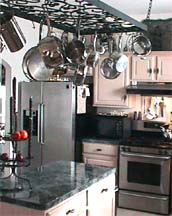
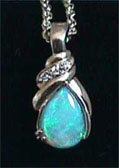 ancient
conifer tree and having to wait until it dies and decays in the
ground and the empty space left being filled with liquid silicon
that hardens into an opal. We will simply take the required products
from the kitchen cabinet and make an opal. In this case all we
need is some of the silicon glue from the tube under the kitchen
sink. Opal is a hydrated oxide of silicon, which means the tube
of silicon glue we have can be mixed with some of the air in
the kitchen, and some water from the faucet, and stir it up until
is forms a paste-like concoction. Now we can let this paste seep
into a cavity, formed where our ancient conifer tree died, was
buried by other vegetation, decayed and disappeared. Wait about
a million years, and viola' the paste has hardened into a nice
opal.
ancient
conifer tree and having to wait until it dies and decays in the
ground and the empty space left being filled with liquid silicon
that hardens into an opal. We will simply take the required products
from the kitchen cabinet and make an opal. In this case all we
need is some of the silicon glue from the tube under the kitchen
sink. Opal is a hydrated oxide of silicon, which means the tube
of silicon glue we have can be mixed with some of the air in
the kitchen, and some water from the faucet, and stir it up until
is forms a paste-like concoction. Now we can let this paste seep
into a cavity, formed where our ancient conifer tree died, was
buried by other vegetation, decayed and disappeared. Wait about
a million years, and viola' the paste has hardened into a nice
opal.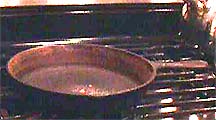
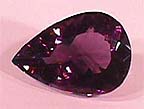 just
need to make a few changes. First we will take some of the silicon
from our tube of glue and put it in the press. We will need some
of the oxygen from the air. Just like an opal, silicon and oxygen
are the prime ingredients of quartz. Which is a large family
of gems and minerals of which amethyst is a member. But even
though all of the family members are quartz, they are all a bit
different because each has its own type of impurity in the form
of various other elements within their crystals, which cause
the variations in colors. So in order to make an amethyst we
are going to mix the silicon and oxygen, but we are also going
to have to take down that iron skillet from the pot rack. Because
amethyst has just a pinch of iron in it to give it its purple
color. So we will add a piece of the handle from the cast iron
skillet to the silicon glue and oxygen from the air and turn
on the heat and pressure for a few million years and again, viola',
we have an amethyst.
just
need to make a few changes. First we will take some of the silicon
from our tube of glue and put it in the press. We will need some
of the oxygen from the air. Just like an opal, silicon and oxygen
are the prime ingredients of quartz. Which is a large family
of gems and minerals of which amethyst is a member. But even
though all of the family members are quartz, they are all a bit
different because each has its own type of impurity in the form
of various other elements within their crystals, which cause
the variations in colors. So in order to make an amethyst we
are going to mix the silicon and oxygen, but we are also going
to have to take down that iron skillet from the pot rack. Because
amethyst has just a pinch of iron in it to give it its purple
color. So we will add a piece of the handle from the cast iron
skillet to the silicon glue and oxygen from the air and turn
on the heat and pressure for a few million years and again, viola',
we have an amethyst.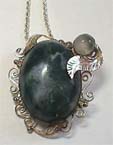 entire cast iron skillet into
the press and you will have a yellow citrine. Turn down the heat
so the mixture does not have as long to crystallize and it will
make millions of tiny crystals that will form a larger massive
stone known as chalcedony. These will not be transparent but
will rather be opaque.
entire cast iron skillet into
the press and you will have a yellow citrine. Turn down the heat
so the mixture does not have as long to crystallize and it will
make millions of tiny crystals that will form a larger massive
stone known as chalcedony. These will not be transparent but
will rather be opaque.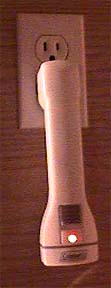
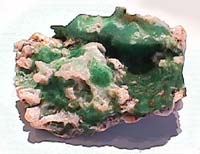
 emergency light on the wall.
emergency light on the wall. you know, the antacid. We could also use
the magnesium from the Epson salt,
you know, the antacid. We could also use
the magnesium from the Epson salt, 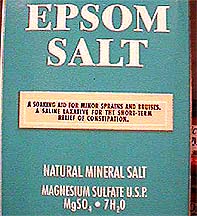 but
we may need that later. For now we will use the magnesium, some
iron from our skillet, and throw in some or our silicon glue
from the tube that is starting to get empty by now
but
we may need that later. For now we will use the magnesium, some
iron from our skillet, and throw in some or our silicon glue
from the tube that is starting to get empty by now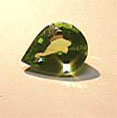 (Mg2SiO4-Fe2SIO4)
(Mg2SiO4-Fe2SIO4) 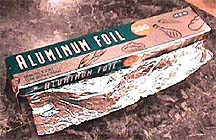
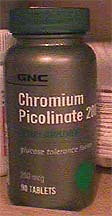 We can substitute
that chromium for the iron, and get a beautiful green uvarovite
garnet. Since the stainless steel cookware
We can substitute
that chromium for the iron, and get a beautiful green uvarovite
garnet. Since the stainless steel cookware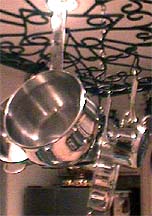 contains almost 18 percent chromium we could have used those
for our chromium source. But then, the tablets have more chromium
and we may need the cookware for dinner. Lets go to the corundums.........
contains almost 18 percent chromium we could have used those
for our chromium source. But then, the tablets have more chromium
and we may need the cookware for dinner. Lets go to the corundums......... 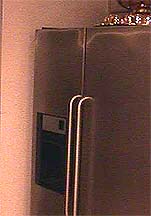 from the plastic cups in the cabinet,
from the plastic cups in the cabinet,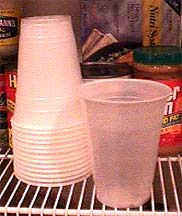 or from the linoleum floor. Since we don't need much we can scrape
some paint from behind the refrigerator and put it in the press.
The aluminum and oxygen will form the corundum, and the iron
and titanium will join together by sharing an electron, and together
they will selectively absorb the right colors to make our
or from the linoleum floor. Since we don't need much we can scrape
some paint from behind the refrigerator and put it in the press.
The aluminum and oxygen will form the corundum, and the iron
and titanium will join together by sharing an electron, and together
they will selectively absorb the right colors to make our 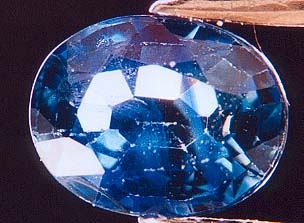 sapphire transmit a beautiful
blue color. (Al2O3) This one is the colored banded one from the
gem grading course.
sapphire transmit a beautiful
blue color. (Al2O3) This one is the colored banded one from the
gem grading course.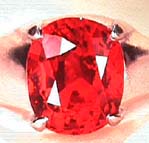 That's
all there is in a ruby.
That's
all there is in a ruby. 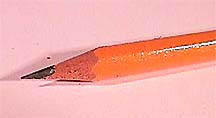 out
of all the pencils in the drawer, turn the heat and pressure
up to the highest setting and we can make a
out
of all the pencils in the drawer, turn the heat and pressure
up to the highest setting and we can make a 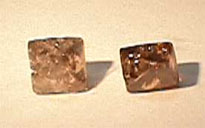 diamond.
diamond. 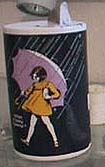 in
a bowl of water and let it sit long enough to dry and form crystals.
You have halite.
in
a bowl of water and let it sit long enough to dry and form crystals.
You have halite.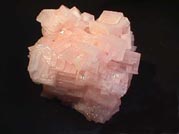
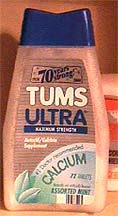 it is made of calcium carbonate.
it is made of calcium carbonate.  We
can put the TUMS into the press and let them form some aragonite
crystals
We
can put the TUMS into the press and let them form some aragonite
crystals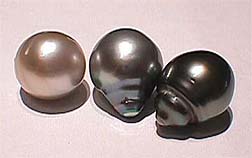 some nice South Sea Pearls. If
you allow an ammolite to eat your TUMS, he will eventually turn
that calcium carbonate into a sea shell. Which will one day become
a gemstone made from a fossil called ammolite
some nice South Sea Pearls. If
you allow an ammolite to eat your TUMS, he will eventually turn
that calcium carbonate into a sea shell. Which will one day become
a gemstone made from a fossil called ammolite 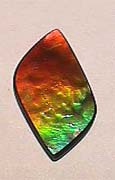 All
four items, TUMS, aragonite, ammolite, and pearls, are made from
the same mineral: calcium carbonate (CaCO3).
All
four items, TUMS, aragonite, ammolite, and pearls, are made from
the same mineral: calcium carbonate (CaCO3). 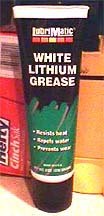 add some aluminum
foil,
add some aluminum
foil, 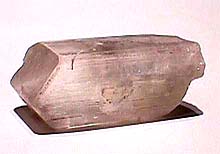 But if you stick it in a flame
it will make the flame burn a brilliant color of red.
But if you stick it in a flame
it will make the flame burn a brilliant color of red. 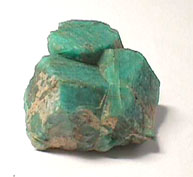 For
this we will need to go to the refrigerator and get a bunch of
cans of Diet 7UP.
For
this we will need to go to the refrigerator and get a bunch of
cans of Diet 7UP.  In those we will
find a great source of potassium due to the preservatives: potassium
benzoate,
In those we will
find a great source of potassium due to the preservatives: potassium
benzoate, 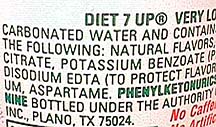 potassium disodium
EDTA, and acesulfame potassium. We will take this potassium,
mix it with our aluminum foil,
potassium disodium
EDTA, and acesulfame potassium. We will take this potassium,
mix it with our aluminum foil,